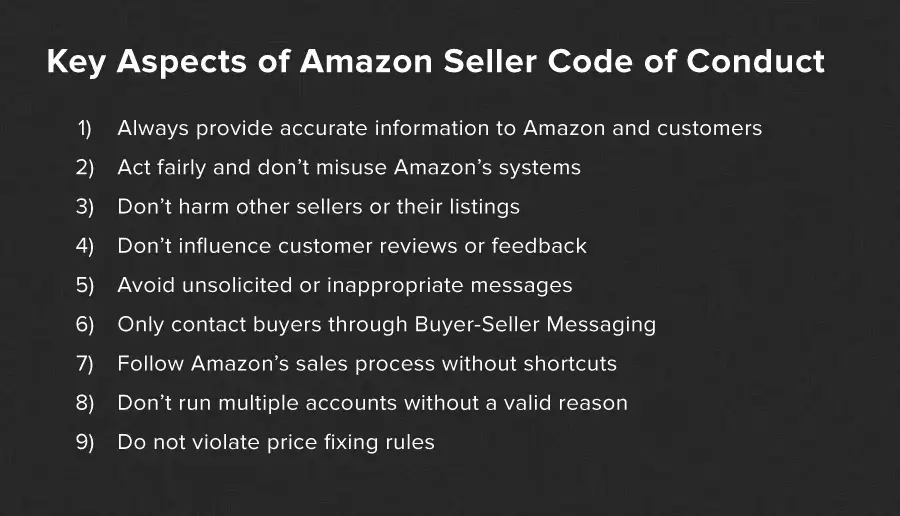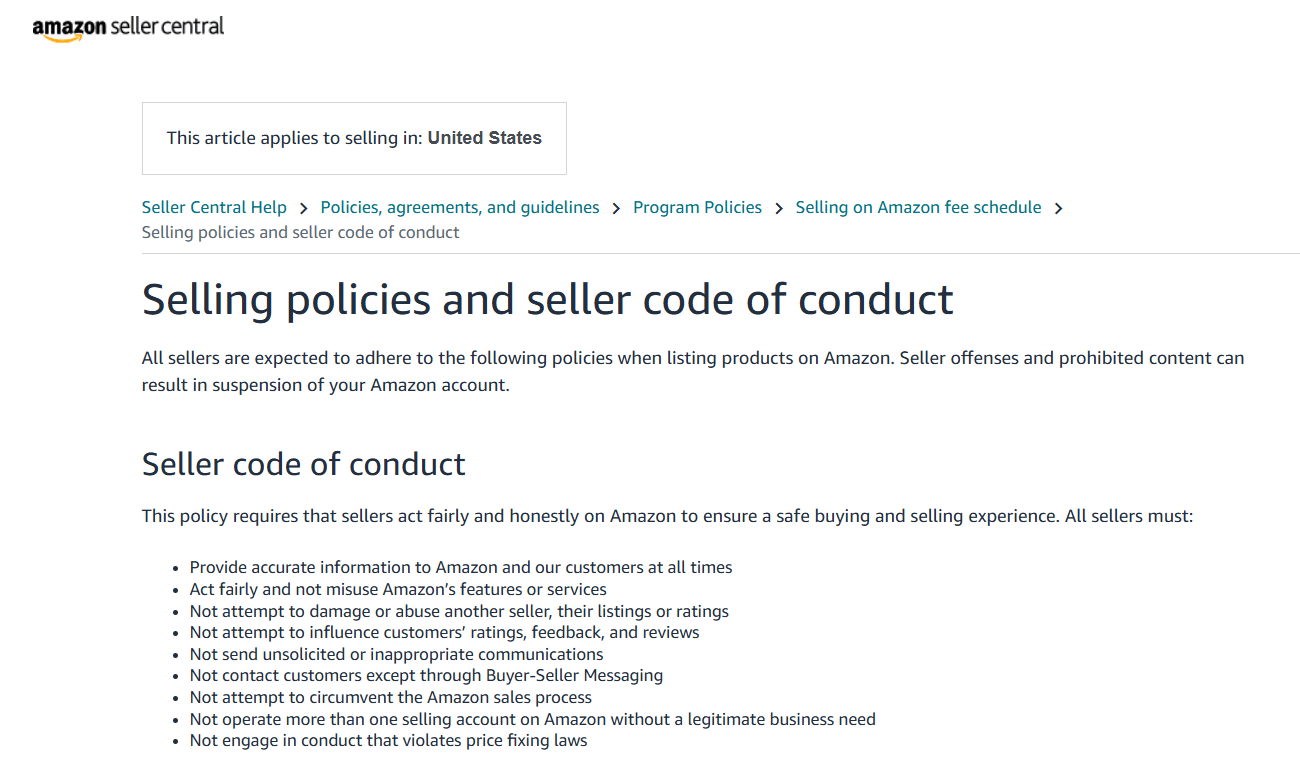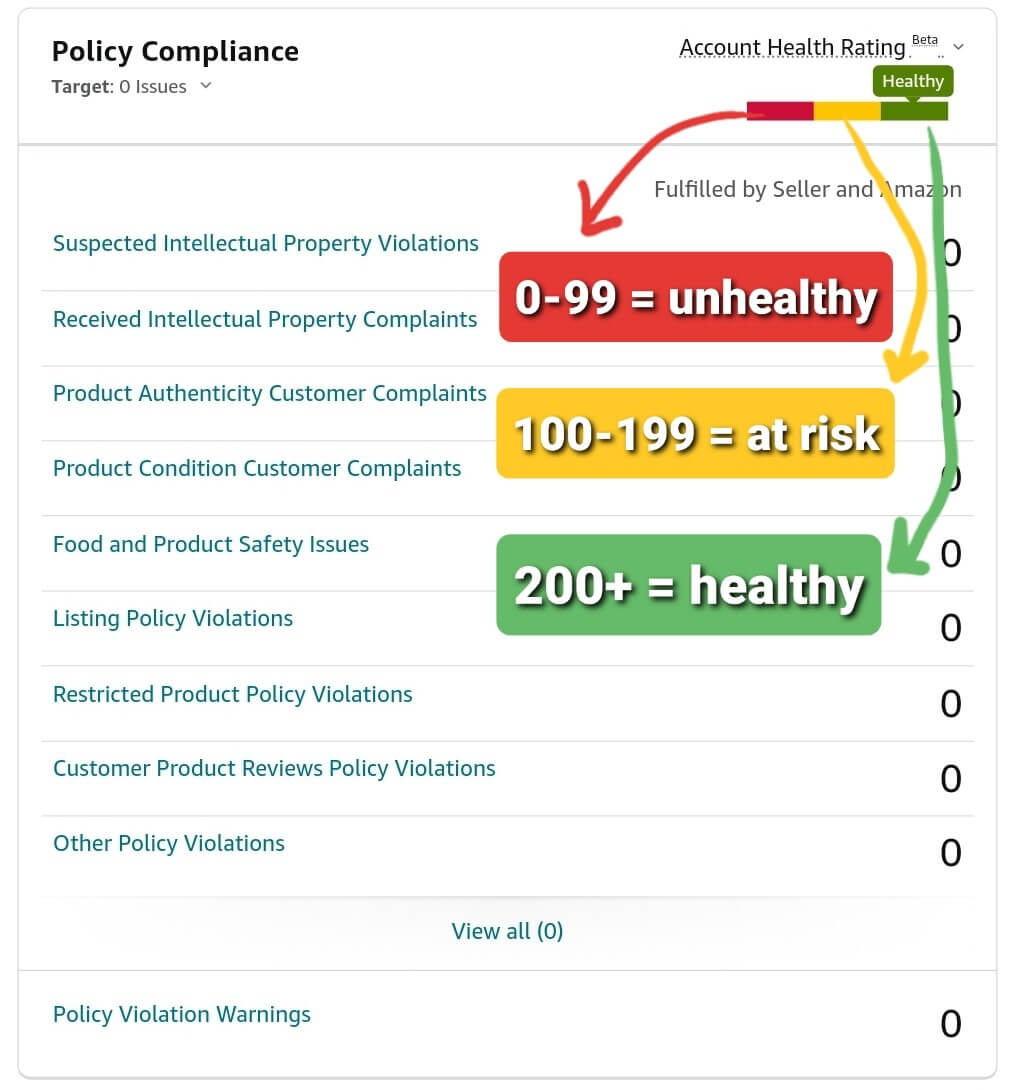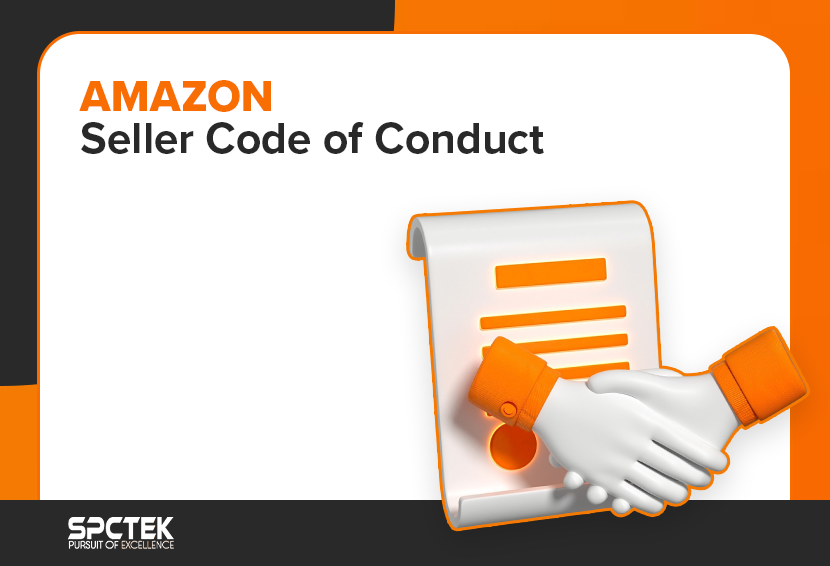Amazon’s Seller Code of Conduct sets out the ethical standards that every seller is required to follow to ensure fair business practices and protect the integrity of the Amazon marketplace. These guidelines cover selling behavior, listing accuracy, and customer interaction.
Sounds straightforward, right? “Stick to the rules and you’ll be okay.” But Amazon has become stricter in how it enforces its Code of Conduct. Even minor violations can result in account suspensions or even permanent bans. You may not get a second chance, and appealing doesn’t always guarantee reinstatement. That’s why it’s critical to get things right from the outset.
This post provides a complete overview of the Amazon Code of Conduct and ethical practices that Amazon requires its sellers to follow. So, let’s dive in for safe selling.
Fundamental Principles of the Amazon Code of Conduct
Amazon provides clear guidelines to the sellers for ethical and legal selling on the Amazon marketplace.

As your business grows, adhering to the Code of Conduct becomes even more vital and complex. Here’s what Amazon demands of its sellers in every domain of their Amazon business:
Product Safety and Liability
Adding more products means ensuring each item complies with Amazon’s safety requirements. Failure to follow these guidelines, especially in sensitive categories like toys, electronics, or health products, can lead to immediate suspensions. Keep your business compliant by staying informed on safety standards, conducting quality checks, and acting swiftly during product recalls.
Truthful Advertising
Amazon enforces strict advertising policies. Misrepresenting your product’s features, origin, or performance can easily breach the Amazon Code of Conduct. Be transparent and accurate in all promotional content.
Fair Competition and Antitrust Laws
As your brand expands, you must understand antitrust regulations. Practices like price collusion, listing manipulation, or coordinated attacks on competitors breach Amazon’s fair competition rules and may lead to external legal trouble as well as internal sanctions.
Staying compliant with Amazon’s advanced seller guidelines is essential to maintain account health and achieve long-term success.
Understanding Amazon Seller Code of Conduct: A Complete Overview

Even minor missteps in following Amazon’s Code of Conduct can have serious consequences for your seller account. Amazon enforces its rules strictly. To stay safe from suspensions, sellers must be proactive. Operating your business in line with Amazon’s expectations ensures a strong seller reputation and greater customer trust.
1. Always Provide Accurate Information
You’re required to give precise, truthful details to Amazon and customers, and update them when necessary. That includes using a legitimate business name, placing your products in the right categories, and ensuring your shipping settings and inventory reflect your actual processes.
2. Create Precise Product Listings
One of the fastest ways to get penalized is by posting misleading or inaccurate listings. Whether accidental or deliberate, such listings are violations.
It’s also against Amazon’s rules to create multiple listings for the same product or to use inappropriate or offensive images.
Be transparent about what you’re offering. Titles, images, and descriptions must truthfully represent the product. Using exaggerated claims like “best” or “guaranteed” can lead to complaints and potential account risks.
Avoid keyword stuffing. Amazon favors genuine, easy-to-understand content. Overloading your listings with keywords can frustrate users and may result in penalties for search manipulation.
Stay informed on category-specific rules, especially in sensitive categories like electronics or toys. Ignorance of these regulations could unintentionally put your account at risk. And remember: raising a product’s price after an order is placed is a serious violation.
To optimize your listings for better conversions according to Amazon’s guidelines, check out this video guide:
3. Keep the Order Defect Rate (ODR) in Check

Amazon pays close attention to performance metrics, and ODR is a critical one. It combines negative feedback, chargebacks, and A-to-Z claims. An ODR above 1% may lead to account deactivation.
- Respond to customer complaints promptly to reduce the likelihood of claims.
- Provide simple, clear return instructions to avoid confusion and disputes.
- Conduct quality checks to ensure products meet customer expectations.
Using Amazon FBA (Fulfilled by Amazon) can help you maintain a low ODR by minimizing logistics-related issues.
Recommended Read: How to Reduce Amazon ODR: Effective Strategies for Sellers
4. Don’t Manipulate Reviews or Feedback
Amazon’s Seller Code of Conduct strictly prohibits any attempt to manipulate customer feedback. Buying fake reviews or offering rewards for positive feedback can result in account suspension.
You may request reviews neutrally, but must:
- Avoid fake review services, even if they promise quick results. Amazon will detect them.
- Refrain from offering incentives for positive reviews, even in packaging materials.
- Focus on genuine feedback to improve your product quality and customer satisfaction.
- Don’t cherry-pick reviewers or review your own (or competitors’) products.
Instead of relying on underhanded tactics, knowing how to leverage customer feedback to your benefit can help you build a stronger and trustworthy brand.
5. Avoid Intellectual Property (IP) Violations

IP violations, intentional or not, are against the Amazon code of ethics and can lead to serious consequences. Selling counterfeit or trademark-infringing items often results in immediate suspension.
- Source from authorized suppliers and maintain proof of authenticity.
- Join the Brand Registry if you own your brand to better protect it.
- Report counterfeit sellers using Amazon’s tools.
6. Follow Amazon’s Restricted Products Policy
Listing prohibited products, even unintentionally, can lead to account suspension. Always ensure new items comply with Amazon’s latest restricted product guidelines. Some items, like health supplements, need pre-approval. Amazon regularly updates these policies, so stay informed.
7. Comply with the Multiple Account Policy
Running multiple accounts without approval violates Amazon’s Seller Code of Conduct. It can lead to the suspension of all related accounts.
You can only open a second account with Amazon’s approval and a valid business justification, such as:
- Managing multiple brands under separate businesses
- Manufacturing for distinct companies
- Participating in Amazon programs that require separate accounts
Ensure all accounts are in good standing to avoid a full suspension.
8. Monitor Account Health and Warnings

Amazon provides tools to track your account’s health. Ignoring warning signs can escalate into bigger issues.
- Check your Account Health Dashboard regularly
- Act quickly on performance notifications
- Submit appeals early if flagged; don’t wait for a suspension
Amazon often gives warnings before suspending, but expects fast, responsible action.
Recommended read: How to Enhance Your Amazon Account Health Score: A Step-by-Step Approach
9. Do Not Harm Other Sellers
Attempts to harm your competitors are a severe violation of Amazon’s code of ethics. Malicious actions, like trying to damage another seller’s ratings or listings, can result in a loss of your selling privileges.
10. Avoid Artificial Sales and Ranking Boosts
Although search rankings are vital for sales and revenue on Amazon, manipulating search or sales rankings through fake orders, paid traffic, or keyword tricks is a serious offense.
This includes:
- Paying for fake orders
- Using bots to drive clicks and traffic to your listings
- Falsely claiming sales rank advantages in listings
Always seek to improve your rankings through fair practices. You can check out this guide below to learn more about keyword rankings:
Top Strategies to Improve Amazon Keyword Ranking and Drive Sales
11. Only Use Buyer-Seller Messaging
All communications with customers must go through Amazon’s Buyer-Seller Messaging system. Unsolicited messages or inappropriate content are violations of Amazon’s ethical code. Marketing or promotional outreach is also forbidden.
12. Respect Customer Information
Ensuring the privacy of customer information is a key aspect of the Amazon Seller Code of Conduct. If you receive customer data for fulfilling orders, use it solely for that purpose. Do not contact customers directly (except through Buyer-Seller Messaging) or share their information with third parties.
13. Don’t Redirect Amazon Customers
It’s against Amazon’s code of conduct to drive traffic away from the platform. Avoid including links or messages that encourage customers to buy elsewhere, such as your own website or any other selling platform.
14. Don’t Abuse IP Reporting as a Seller
If you’re a seller, you cannot file infringement claims as a brand agent if doing so benefits your own account, such as removing competitor listings. Misusing this process can lead to account termination.
What to Do if Your Account Is Suspended
Despite your best efforts, suspensions can still occur, but that doesn’t mean the end of your Amazon journey.
Despite your best efforts, suspensions may still happen. But it’s not necessarily the end of the road.
- Stay calm and review the suspension notice: Amazon will explain the reason behind the suspension.
- Draft a detailed Plan of Action (POA): Your POA should explain the root cause, the corrective steps you’ve taken, and how you’ll prevent the issue in the future.

Need help crafting a strong Plan of Action? Check out our POA guide.
- Take professional help if needed: If the case is complex, expert assistance can improve your chances of reinstatement. SPCTEK’s reinstatement experts can help you get your account back on track.
- Submit your appeal: Once your Plan of Action (POA) is ready, submit it through Amazon Seller Central. Keep your tone professional, and make sure your plan is clear and solution-focused. Avoid emotional language or placing blame on Amazon, stick to the facts, and the steps you’ve taken to resolve the issue.
- Actively follow up: After submitting your appeal, closely monitor your account and email for updates. Avoid contacting Seller Support too frequently, as it might slow down the process. If your appeal is denied, don’t be discouraged. Carefully review Amazon’s feedback, revise your POA accordingly, and resubmit. Persistence often leads to reinstatement.
- Take preventive measures: Take proactive measures to avoid repeating past mistakes. Regularly review the Amazon Code of Conduct and maintain high compliance standards. Resolve issues promptly and track your account health consistently.
- Audit your product listings to ensure compliance with Amazon’s content, image, and pricing standards.
- Train all team members and virtual assistants on Amazon’s Code of Conduct to avoid costly violations.
- Use tools like the Account Health Dashboard and Seller Performance Metrics to detect and fix issues early.
- Set up automated reminders to periodically check key performance indicators and account health, enabling you to catch and correct violations before Amazon intervenes.
With the right strategy, you can bounce back from a suspension and continue scaling your Amazon business. Staying compliant with the Amazon Seller Code of Conduct is easier and far less stressful than dealing with corrective actions after a violation.
Final Thoughts
Understanding and following Amazon’s Seller Code of Conduct might seem challenging at first, but compliance is manageable when you approach it proactively. Consistently review your account metrics, stay informed about policy changes, and adopt ethical practices in every aspect of your operations.
Amazon’s rules exist to safeguard the marketplace. They’re not just procedural hurdles, they help maintain trust between sellers, the platform, and millions of customers. However, enforcement is strict and often immediate.
That’s why it’s vital to stay educated, operate within Amazon’s guidelines, and seek expert guidance when necessary. If you’re ever faced with a warning or suspension, act quickly: craft a strong Plan of Action, respond to customer concerns professionally, and reinforce a culture of compliance within your team.
Got More Questions?
Amazon’s Seller Code of Conduct prohibits fake information, illicit ranking inflation, feedback manipulation, harming others or Amazon, misusing customer information, and redirecting or contacting customers off the platform.
To avoid account or listing suspension on Amazon, it’s crucial to follow the Amazon Code of Conduct and fair business practices. You also need to maintain your Amazon account health to keep your Amazon business up and running.
Violating Amazon’s ethical guidelines or Code of Conduct can lead to the suspension of your selling privileges, such as listing or account suspension, or even a permanent ban. Sometimes, Amazon can also withhold or forfeit your payments.






